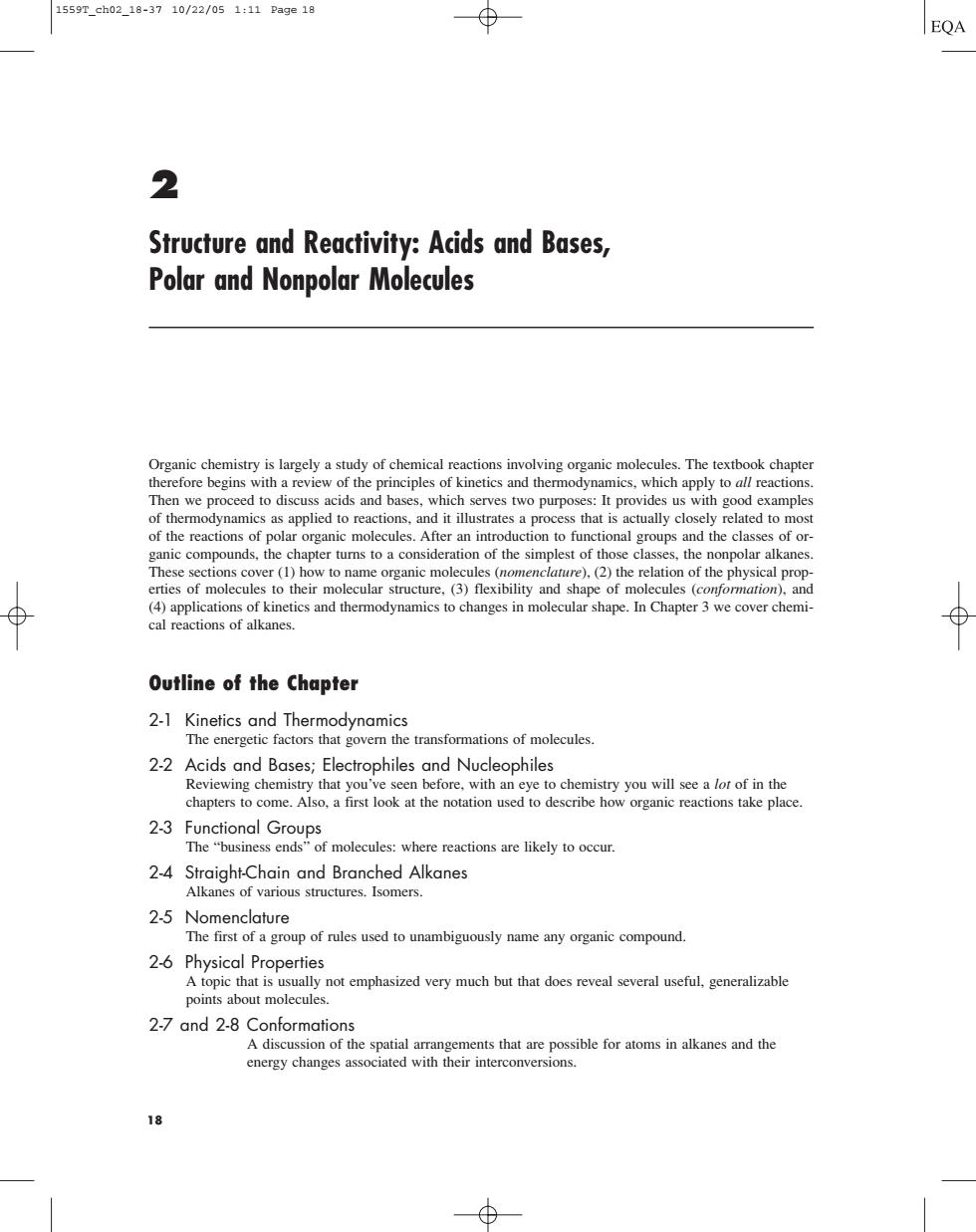正在加载图片...

1559T.ch02.18-3710/22/051:11Page18 EQA 2 Structure and Reactivity:Acids and Bases, Polar and Nonpolar Molecules Then we proceed bases,which wo purposes:It provides uswith good exampe of h applie to reactions rates a proces tha ted to m ganic compounds,the chapter tums to aconsideration of the simplest of those classes,the nonpolar alkanes. (4)applications of kinetics and thermodynamics to changes in molecular shape.In Chapter3we cover chemi- cal reactions of alkanes. Outline of the Chapter 2-1 Kinetics and Thermodynamics The energetic factors that govern the transformations of molecules chapters to come.Also,a first look at the notation used to describe how organic reactions take place 23feceadlCesP2amlnlkstaeeataseeiyooa 2-5 Nomenclature The first of a group of rules used to unambiguously name any organic compound 2-6 Physical Properties A topic that is usually not emphasized very much but that does reveal several useful,generalizable points about molecules. 2-7 and 2-8 Conformations A discussion of the spatial arrangements that are possible for atoms in alkanes and the energy changes associated with their interconversions. 1818 2 Structure and Reactivity: Acids and Bases, Polar and Nonpolar Molecules Organic chemistry is largely a study of chemical reactions involving organic molecules. The textbook chapter therefore begins with a review of the principles of kinetics and thermodynamics, which apply to all reactions. Then we proceed to discuss acids and bases, which serves two purposes: It provides us with good examples of thermodynamics as applied to reactions, and it illustrates a process that is actually closely related to most of the reactions of polar organic molecules. After an introduction to functional groups and the classes of organic compounds, the chapter turns to a consideration of the simplest of those classes, the nonpolar alkanes. These sections cover (1) how to name organic molecules (nomenclature), (2) the relation of the physical properties of molecules to their molecular structure, (3) flexibility and shape of molecules (conformation), and (4) applications of kinetics and thermodynamics to changes in molecular shape. In Chapter 3 we cover chemical reactions of alkanes. Outline of the Chapter 2-1 Kinetics and Thermodynamics The energetic factors that govern the transformations of molecules. 2-2 Acids and Bases; Electrophiles and Nucleophiles Reviewing chemistry that you’ve seen before, with an eye to chemistry you will see a lot of in the chapters to come. Also, a first look at the notation used to describe how organic reactions take place. 2-3 Functional Groups The “business ends” of molecules: where reactions are likely to occur. 2-4 Straight-Chain and Branched Alkanes Alkanes of various structures. Isomers. 2-5 Nomenclature The first of a group of rules used to unambiguously name any organic compound. 2-6 Physical Properties A topic that is usually not emphasized very much but that does reveal several useful, generalizable points about molecules. 2-7 and 2-8 Conformations A discussion of the spatial arrangements that are possible for atoms in alkanes and the energy changes associated with their interconversions. 1559T_ch02_18-37 10/22/05 1:11 Page 18